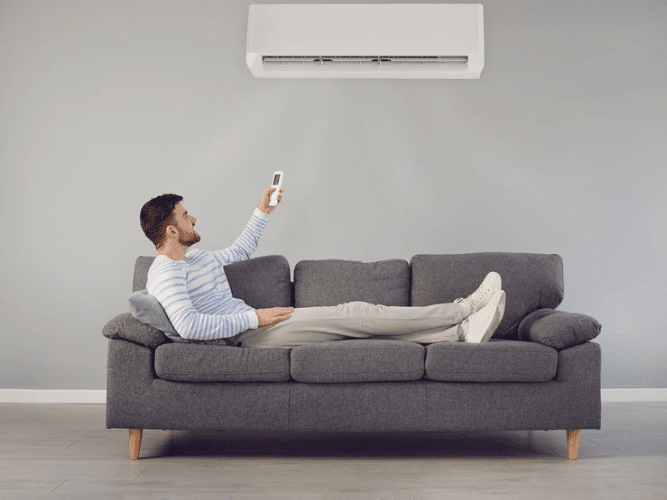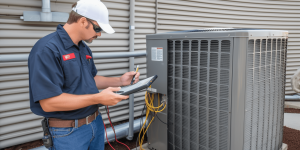When winter begins, your heating system works harder to keep your home warm, often leading to higher energy bills. Choosing the right thermostat temperature for winter helps you stay comfortable indoors while keeping your heating costs low and manageable.
The best winter thermostat setting is 68°F during the day while you’re at home. Lowering it by 7 to 10 degrees at night or when you’re away helps reduce energy use, saves money, and keeps your home warm and efficient.
This guide covers the ideal indoor temperature for your home in colder months, the key factors that affect heating needs, and easy tips to reduce energy costs. These practical tips work with any thermostat to enhance comfort and improve energy efficiency.
Why Your Winter Thermostat Setting Matters
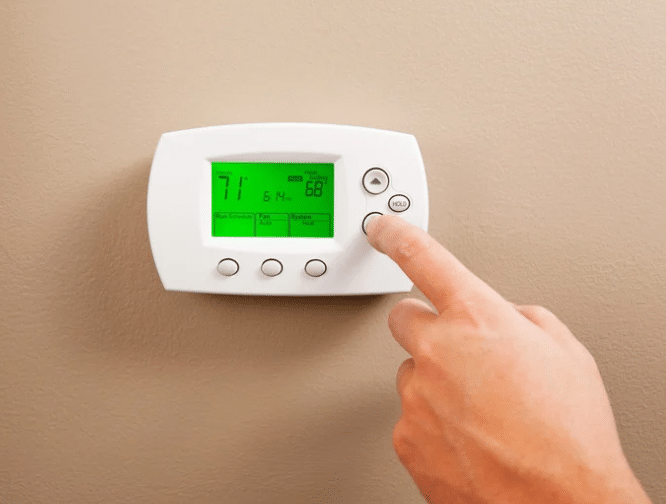
Your thermostat controls how warm your home feels and how much energy you use. If the setting is too high, it can increase your bills. If it’s too low, your home may feel too cold. The winter thermostat setting recommended is 68°F when you’re home.
Lowering the temperature at night or when away can reduce heating costs by up to 10% yearly. The best setting depends on insulation, weather conditions, and personal comfort. Small thermostat changes help keep your home warm while saving energy during the colder months.
The Ideal Heat Setting During Winter
Finding the right thermostat temperature for winter helps keep your home warm while keeping your energy bill low. Here’s what experts recommend during colder months:
1. When You’re Home & Active (Daytime)
Set your thermostat to 68°F (20°C) during the day for comfort and energy savings. This winter setting keeps your home warm without increasing costs. Wear a sweater or use a blanket instead of turning the heat up too high.
2. When You’re Asleep or Away
Lower the thermostat to around 60–62°F (15–17°C) when sleeping or away for several hours. This small change can reduce heating costs by up to 10%. A smart or programmable thermostat can reset the temperature before you wake up or return home.
3. For Homes with Infants, Elderly, or Health Concerns
If your household includes infants, older adults, or those with medical needs, a warmer setting of around 70°F (21°C) is better. You can use a space heater in rooms you’re using to stay warm without increasing the temperature throughout the entire home.
Factors That Affect Your Ideal Heat Setting During Winter
Finding the right temperature for your home during colder months depends on several important factors that affect both comfort and energy efficiency.
Home Insulation & Drafts
Good insulation helps your home retain heat, allowing you to stay warm with a lower thermostat temperature for winter. Check windows and doors for cold air leaks. Add weatherstripping or thick curtains to keep warm air in and cold air out.
Humidity Levels
Dry air during the colder months can make your home feel chillier than it is. Using a humidifier helps increase moisture in the air, making 68°F feel warmer and more comfortable, so you can stay cozy without raising the heat.
Heating System Efficiency
Old heaters may not effectively warm your home. Cleaning or upgrading your heating system helps it function more efficiently. A well-maintained system maintains a steady temperature during the cold season, saves energy, and helps your home stay warm during chilly days and nights.
Personal Comfort Preferences
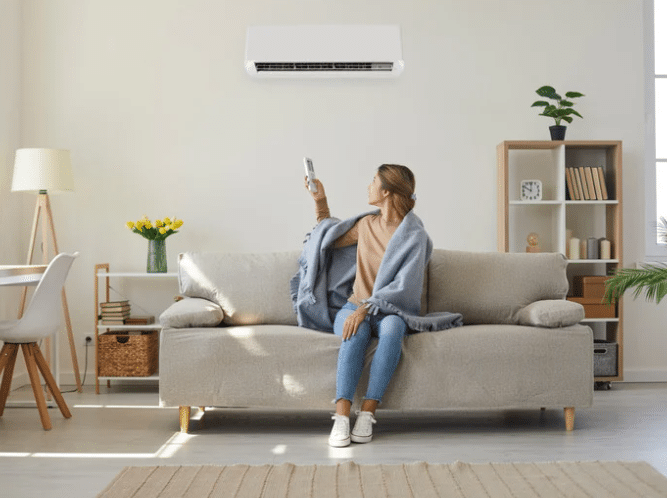
People experience warmth and coldness in different ways. Try setting your thermostat between 65°F and 70°F to find what feels right for your home. This helps you stay comfortable while keeping your winter thermostat setting low enough to save energy and money.
Smart Strategies to Maximize Comfort & Savings
Want to keep your home cozy while saving on energy costs? These smart strategies help you maximize the benefits of your thermostat.
Use Zoned Heating
If your home has separate heating zones, adjust each one based on how you use the space. Keep the living room warmer and lower the heat in unused rooms. This saves energy while keeping your main areas cozy during the winter.
Take Advantage of Sunlight
Let sunlight naturally heat your home during the day by keeping curtains or blinds open. This simple step helps boost indoor warmth without extra energy use. At night, closing the curtains helps trap heat inside, improving comfort and reducing heating costs.
Layer Up & Use Blankets
Wearing warm clothes indoors helps you feel comfortable even with a lower thermostat setting. Add soft blankets to beds and couches for added comfort. These small changes help keep you warm without turning up the heat, which can reduce energy use and lower your heating bills.
Seal Leaks & Improve Insulation
Prevent warm air from escaping by sealing leaks around doors, windows, and the attic. Good insulation keeps heat inside and helps your heating system work less. This allows for a lower winter thermostat setting while maintaining a comfortable home temperature and reducing energy costs.
Common Myths About Winter Thermostat Settings
Staying warm in winter doesn’t mean falling for heating myths. Here are the most common winter thermostat misconceptions that confuse homeowners:
Myth 1: Turning the Thermostat Up Heats Faster
Turning your thermostat to a higher number doesn’t heat your home faster. The heater operates at the same speed regardless of the setting. Setting it too high just makes it run longer, consume more energy, and unnecessarily increase your heating bill for no reason.
Myth 2: Keeping the Same Temperature Saves Money
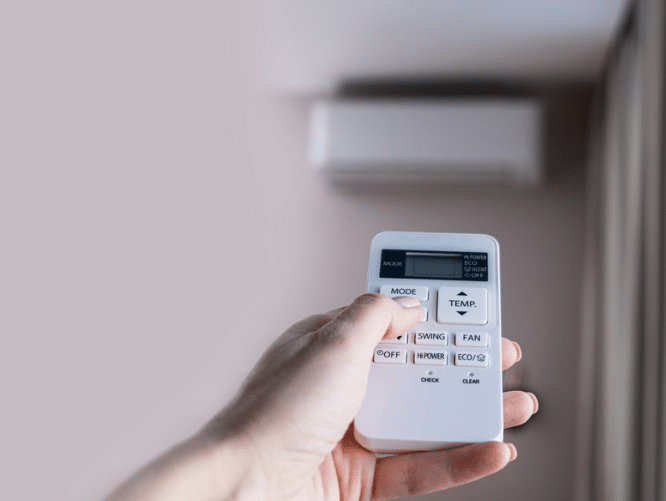
Keeping your home at the same temperature all day doesn’t help save money. Allowing the temperature to drop while you sleep or are away uses less energy. A smart thermostat can help manage this automatically, making it easier to lower your heating costs in winter.
Myth 3: Space Heaters Always Cost Less
Space heaters may seem inexpensive, but using them excessively can increase your electric bill. They’re only suitable for heating one room while someone is present. It’s better to use your home’s central heating system and only use space heaters when necessary.
Frequently Asked Questions
What is the best thermostat setting for winter?
During winter, setting your thermostat to 68°F offers a comfortable balance between warmth and energy efficiency. This setting helps maintain indoor comfort without overworking your heating system. Lowering the temperature slightly at night can further increase savings on utility bills.
What temperature should my AC be in the winter?
In colder months, your AC should typically be off unless it’s part of a heat pump system. If heating is needed, set the temperature to around 68°F for steady indoor comfort. Avoid using cooling mode during winter, as it can strain the unit and waste energy.
Is 23 degrees too hot for a house?
A temperature of 23°C, or about 73°F, may feel overly warm indoors during winter. It can cause dryness and increase energy costs. For a better environment and cost control, consider adjusting your heating system to maintain a temperature closer to 20°C instead.
How low can the thermostat be set in winter?
A safe and efficient winter setting is between 60°F and 65°F when you’re away or sleeping. This range prevents excessive heating while still protecting your home. For daily use, 68°F is often suggested to provide steady warmth without wasting energy.
Does a lower thermostat mean colder?
Yes, reducing your thermostat setting lowers the room’s temperature. The heating system runs less often, resulting in a cooler environment. This can help reduce heating costs, but it’s essential to find a setting that still maintains a comfortable living space.
Conclusion
Staying warm during colder months doesn’t have to mean higher bills. A well-managed home heating plan ensures cozy rooms and better energy use. Setting the right indoor temperature can make a big difference in comfort, performance, and long-term cost savings throughout the winter.
With expert guidance, you can strike a balance between warmth and efficiency. Minor thermostat adjustments and consistent habits help your heating system work more efficiently. These strategies support a more reliable indoor climate while reducing strain on your equipment over time.
AC Repair DFW is here to support your comfort goals with trusted HVAC service. For help with setting or upgrading your system, call (817) 285-8000 today. Let us help you take full advantage of the ideal winter thermostat setting for a warmer, more efficient home.
End Note
Stay warm with the right winter thermostat setting and expert help from AC Repair DFW. Our licensed team offers trusted HVAC services, including installation and replacement, to improve comfort, energy savings, and year-round home efficiency.
You can learn more about us on our About Us page. For helpful tips and seasonal advice, visit our blog. You can also stay connected with us on Facebook, Instagram, and X for updates and expert guidance throughout the year.
To optimize your comfort with the ideal winter thermostat setting, please contact us through our contact page. AC Repair DFW delivers quick, professional service you can count on. We make it easy to keep your home warm and energy efficient.


